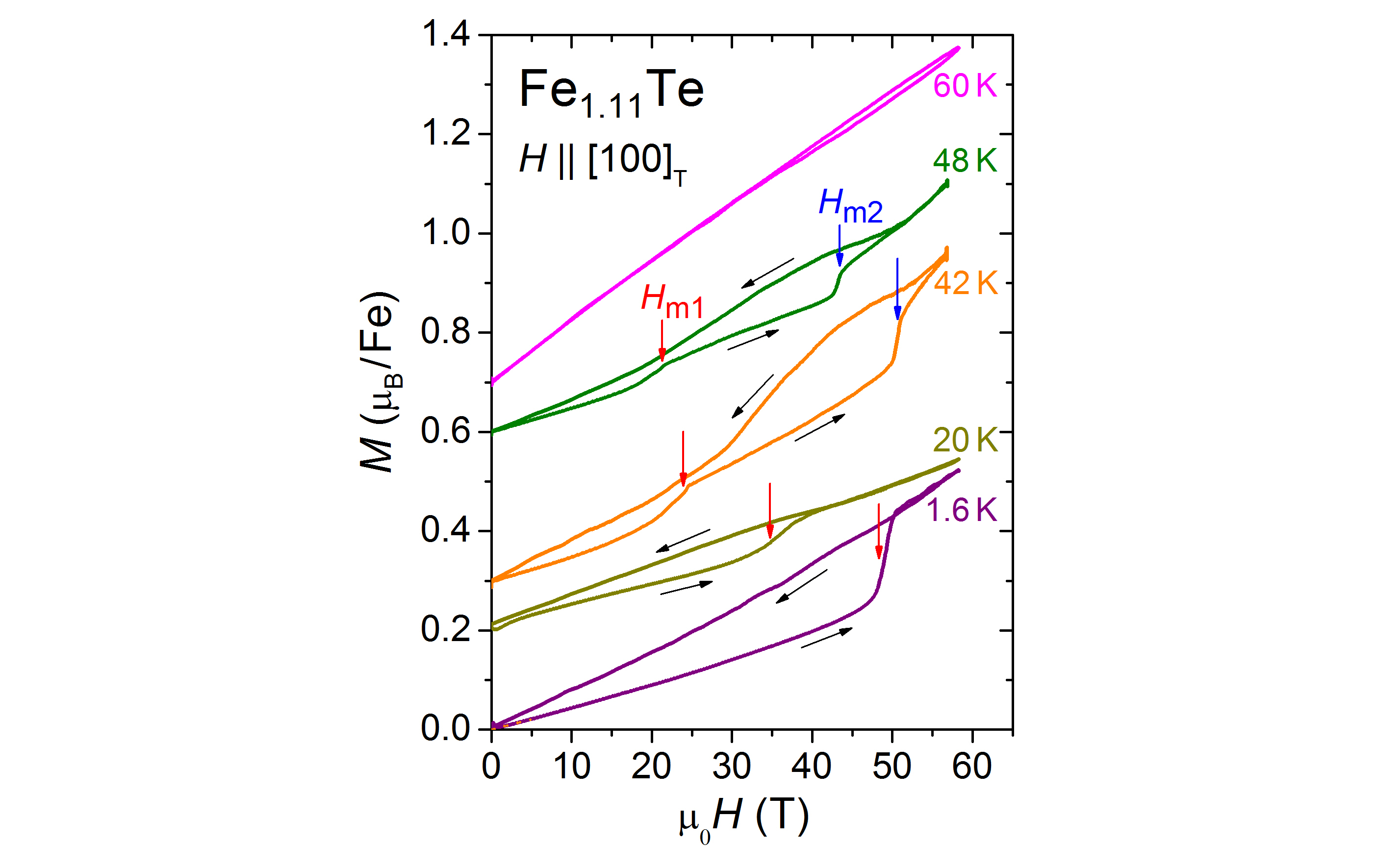S. Rößler, S. Wirth, MPI CPfS Dresden and Y. Skourski, HLD Dresden
In recent years, the iron chalcogenides received considerable attention in the condensed-matter physics community which was mainly sparked by the discovery of superconductivity below Tc ≈ 8.5 K in bulk FeSe. The binary sister compound Fe1+yTe is not superconducting, yet an interesting material in its own right, exhibiting several unusual structural and magnetic phase transitions. Recently, researchers from different institutions in Dresden found two different types of magnetic shape memory effects in this enigmatic compound. Such effects are extraordinary phenomena referring to a change in shape and/or size of a magnetic material upon applying a magnetic field. These effects emerge from either a persistent de-twinning of a twinned magnetically ordered material, in which the crystallographic axes are irreversibly reoriented by the applied magnetic field, or a magneto-elastic phase transition driven by an external magnetic field. Typically, these effects are observed in ferromagnetic materials with strong spin-lattice couplings, and the two types are rarely found in the same material. Conventional shape memory alloys have found a tremendous number of applications in biomedical, technological, domestic, and textile industries. The magnetic analogues are increasingly gaining interest due to potential applications in magnetic actuators or sensors.
However, magnetic shape memory effects are not commonly observed in antiferromagnets, and the exact mechanisms driving the effects are not well understood. Therefore, the identification of a new class of materials where these types of transformation in crystalline solids can be observed is expected to provide new and much-desired insight. The experimental results clearly indicate that the two abovementioned magnetic shape memory effects take place in the low temperature antiferromagnetic phase of the material Fe1+yTe (y = 0.11, 0.12). The antiferromagnetism of the monoclinic ground state allows for a magnetic field-induced reorientation of the twin variants by the motion of one type of twin boundary, as evidenced by jumps in the magnetization (Figure) and magnetostriction measured along certain crystallographic directions in high applied magnetic fields.
At even higher magnetic fields, a second transition is observed, e.g., at about 52 T at 1.6 K for Fe1.12Te. This second transition is isotropic in nature, which calls for a different underlying mechanism. Yet, its irreversible behavior also indicates a memory effect. Accompanying density functional theory (DFT) calculation allowed us to estimate the strength of the magnetocrystalline anisotropy and the direction of the magnetic easy axis.

Figure: Magnetization measurements up to 60 T on a Fe1.11Te single crystal at different temperatures. At T = 1.6 K, a jump is observed at Hm1(red arrows) which is not seen in the curve for decreasing field, consistent with a magnetic shape memory effect. Hm1 shifts to lower magnetic fields as T is increased. At 42 K and higher, a second transition Hm2 is found (blue arrows). In the paramagnetic phase above 57 K, the transitions are no longer observed. Black arrows indicate the direction of the field sweep.
Two types of magnetic shape memory effects from twinned microstructure and magneto-structural coupling in Fe1+yTe,
S. Rößler, C. Koz, Z. Wang, Y. Skourski, M. Doerr, D. Kasinathan, H. Rosner, M. Schmidt, U. Schwarz, U. K. Rößler, and S. Wirth, Proc. Natl. Acad. Sci. USA 116, 16697 (2019).
DOI: https://doi.org/10.1073/pnas.1905271116
Contact: wirth@cpfs.mpg.de






